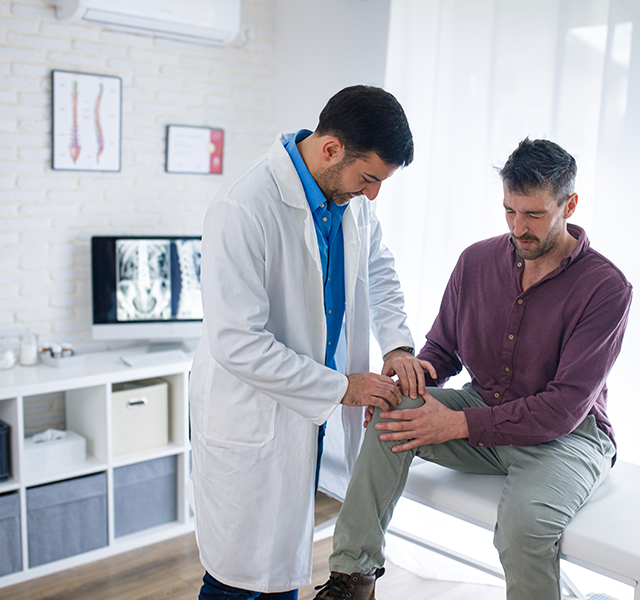Just the term “bone spur” sounds painful. Surprisingly, however, bone spurs are often asymptomatic – sometimes you might not even know they’re there unless you see them on an X-ray, says Derek Semaan, M.D., an orthopedic surgeon at Henry Ford Health.
“Bone spurs are areas of extra bone growth,” says Dr. Semaan. “They’re kind of like ‘protective’ mechanisms; they grow as a way to reduce motion in places that are experiencing increased stress.”
If bone spurs grow around smaller joints closer to the skin, like the hands or feet, you might be able to feel them – like little round bumps protruding from the skin. Also called osteophytes, bone spurs can form due to stress from:
- Osteoarthritis. The most common cause of bone spurs, osteoarthritis is a wear-and-tear disease of the joints. As we get older, we lose cartilage in our joints, which cushions the bones. Losing cartilage means the bare bones are rubbing against each other, which can cause pain, inflammation, swelling and stiffness. If a bone spur is inhibiting movement, it may also increase stiffness.
- Trauma. When a bone heals itself due to injury, a bone spur may form as part of the repair process, kind of like a scar.
- Tendonitis of the foot or shoulder. Tendonitis occurs when the tendons become inflamed, causing pain and swelling. It’s often due to repetitive movements (while on the job or playing sports, for example). In the case of foot tendonitis, it can also occur over time from not wearing supportive shoes.

Orthopedics At Henry Ford Health
If a bone spur is pressing on ligaments, tendons or nerves, it may cause pain, stiffness, swelling or tingling. If your bone spur is causing pain without an underlying issue, your doctor may simply remove it. (There isn’t any other way to get rid of a bone spur.) But most of the time, Dr. Semaan says the pain is actually caused by one of the above underlying conditions – and in the majority of cases, it’s osteoarthritis.
Treatment For Bone Spurs
“Treatment for bone spurs goes hand in hand with managing osteoarthritis,” explains Dr. Semaan. “The approach begins with conservative, non-surgical methods, including over-the-counter anti-inflammatory medications to ease inflammation, cortisone or gel injections to target inflammation at the source or lubricate the joints, and physical therapy to strengthen surrounding muscles and reduce pressure on the joints. If these options are exhausted without sufficient relief, we’ll consider joint replacement surgery, during which bone spurs are removed—often addressing both conditions effectively."
Can You Prevent Bone Spurs?
You can’t really prevent bone spurs, just as you can’t really prevent the wear-and-tear of your joints throughout your life. That said, there are steps you can take to slow the degradation of your joints, like daily stretching and strength training. Engaging in low-impact exercises, like swimming and biking, are also easier on your joints. Wearing the proper footwear is also important – and if you have a high body mass index (BMI) losing weight can help take pressure off your joints, too.
Reviewed by Derek Semaan, M.D., an orthopedic surgeon at Henry Ford Medical Center – Jackson.



